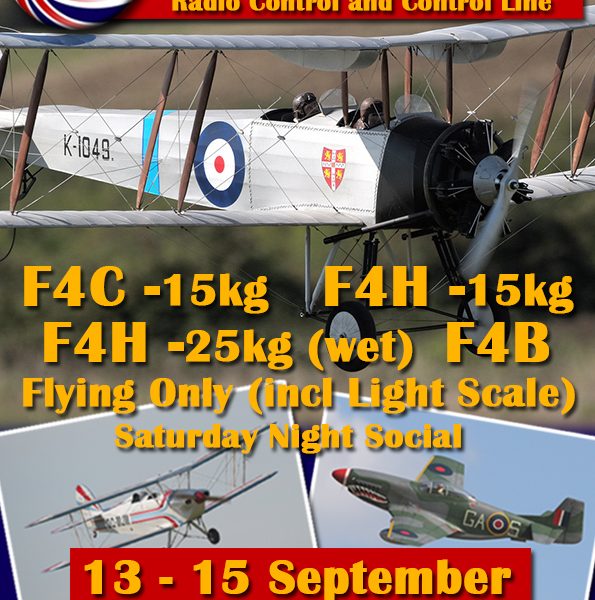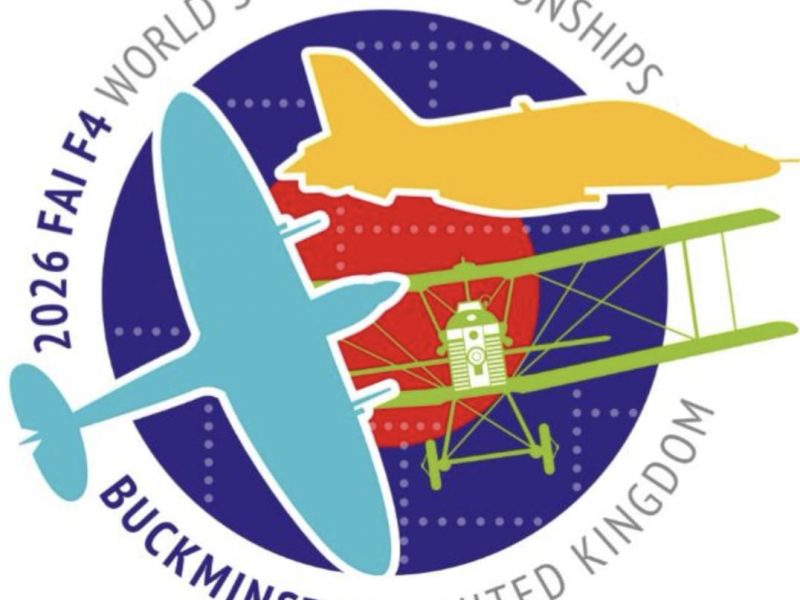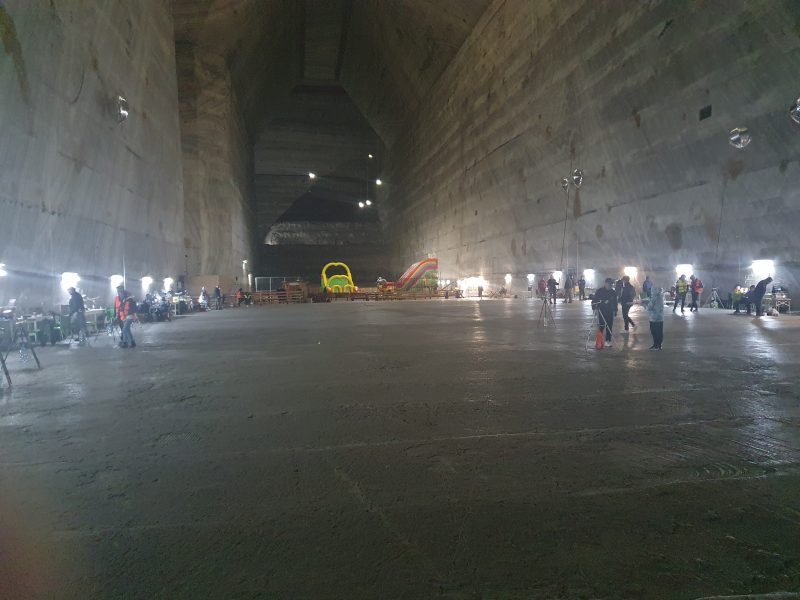<p><strong>NPA 2017-05(A) Introduction of a regulatory framework for the operation of drones </strong></p>
<p>The European Aviation Safety Agency (EASA) began the process to create a regulatory framework for the operation of drones in 2015, when in August they published the A-NPA 2015/10 – “Introduction of a regulatory framework for the operation of drones”. This document appeared to offer a number of concession<a name="_GoBack"></a>s and safeguards to avoid a negative impact on the long established activity of model flying. Europe Air Sports (EAS) provided formal feedback to this publication and in all there were around 3,400 comments submitted. </p>
<p>EASA then published their Technical Opinion in December 2015, which again stated that “the intention is to develop rules which will not affect model flying”.</p>
<p>EASA do not at this stage have the authority/competence to regulate aircraft below 150Kg, and so their next publication in August 2016 was the “Prototype Regulation for Unmanned Aircraft Operations“. EASA stated that this document was intended to provoke discussion to help them formulate the actual NPA (notice of proposed amendment – which outlines the proposed rules). EASA certainly achieved the objective of provoking discussion and received over 1000 emails from model aircraft practitioners expressing their dissatisfaction with the requirements for model aircraft included in the “Prototype Regulation“.</p>
<p>Based on the feedback received, EASA agreed to create an “Expert Group“ to help improve the quality of the draft regulation and develop additional options for model aircraft activities. The Expert Group comprised 26 members selected from relevant stakeholders. Model flyers were represented by Dave Phipps (Europe Air Sports) and Bruno Delor (FAI). In all, the Expert Group met for a total of nine days between November 2016 and March 2017 with an additional Webex meeting to discuss model flying.</p>
<p>The NPA (2017-05 A) was published on the 12<sup>th</sup> May and is open for feedback until 15<sup>th</sup> September. It can be viewed here: <a href="https://www.easa.europa.eu/system/files/dfu/NPA%202017-05%20%28A%29_0.pdf">https://www.easa.europa.eu/system/files/dfu/NPA%202017-05%20%28A%29_0.pdf</a></p>
<p>The position taken by Europe Air Sports (and FAI) on behalf of model Flyers throughout Europe was that model aircraft and model flying should not fall within EASA regulations at all. We lobbied through the European political system for model flying to be clearly derogated from “drone“ flying and proposed placing it within Annex 1 of the Basic Regulation (to leave it within national control). Unfortunately, there was insufficient political support to remove model flying from EASA regulation entirely, but a compromise was reached which compelled EASA to include “<em>dedicated provisions for recreational flight activities conducted within the framework of model clubs and associations” </em>within the regulations. As such, the NPA (whilst not what we would have chosen) does certainly improve the situation for model flyers in comparison to the rules outlined in the “Prototype Regulation“.</p>
<p>Within the “Prototype Regulation“, model flying in its established forms would only have been possible within the scope of Article 15 of the “Specific“ Category which still imposed disproportionate restrictions and would have prevented us from operating as we do today. The NPA now provides further options to facilitate model flying within the “Open“ Category (with some restrictions), within the “ Specific“ Category under the terms of Article 14 with an authorisation granted by the national Competent Authority (usually the national civil aviation authority) and also within the terms of Article 12 which allows a Member State to define zones in which model aircraft could operate.</p>
<p>The regulations contained within the NPA consider only the ‘Open’ and ‘Specific’ categories of operation (within visual line of sight) and do not cover any indoor operation.</p>
<p>The regulations contained within the NPA are still quite complex and not easy to follow. However, I will try to summarise, for the model flying community, the most relevant points contained within the 128 pages of NPA 2017-05(A).</p>
<p><strong>Open Category Operations</strong></p>
<p>EASA’s objective for the Open Category was that safe operation would be achieved by defining the technical specification and performance of the aircraft. The intention was that operations within the Open Category would require minimal involvement from the national regulators with any enforcement being carried out by the Police.</p>
<p>Within the “Prototype Regulation“, it would have been difficult to envisage the possibility of any model flying within the Open Category the regulation would have required functionality not found in traditional model aircraft such geo-fencing and active height limitation. The proposals appeared to focus on aircraft sold as a “system“ ready to operate and required aircraft to carry a CE marking depicting a ‘multi-rotor drone’.</p>
<p>The NPA proposed additional classifications for Open Category aircraft which would more easily permit model aircraft to be included (see page 15).</p>
<p>Category A3 (Fly far from people) includes two classes (C4 and Privately Built) which require that:</p>
<ul style="list-style-type: circle;">
<li>Aircraft must have a MTOM of less than 25Kg.</li>
<li>Aircraft are flown in an area where it is reasonably expected that no uninvolved person will be present and that a safe distance is maintained from the boundaries of congested areas of cities, towns, settlements or aerodromes.</li>
<li>Maximum height of operation is less than 120 m (or up to 50 m above a higher obstacle at the request of the owner of the obstacle!).</li>
<li>A basic level of pilot competence should be established with a leaflet included with the aircraft and some form on online training and test.</li>
<li>The minimum age of the pilot is 16 unless supervised.</li>
<li>The main technical requirements (in addition to existing CE certification requirements) are the mandatory inclusion of operational instructions and an EASA awareness leaflet with model aircraft placed on the market (see page 56). Unfortunately, it remains a requirement to ‘display in a visible manner’ a label depicting a multi-rotor drone and the C4 classification. Not ideal on a nice scale model!</li>
<li>A requirement for both the operator and the aircraft to be registered (UAS.OPEN.20 – see page 35) although there is an acceptable means of compliance which allows the competent authority to include deviations from this requirement for model aircraft (see page 106).</li>
<li>Electronic identification and geofencing, but only if required for the area in which you are operating.</li>
</ul>
<p>When considering the above, there are clearly some major new restrictions in terms of how model flyers in most Member States operate today. However, it is important to consider that the requirements outlined above are intended for those operating as individuals (who have been largely responsible for the incidents and prosecutions involving ‘drones’ over the last few years) outside of the established framework of the organised model flying associations throughout Europe. </p>
<p><strong>Specific Category Operations</strong></p>
<p>EASA’s objective with the Specific Category was that safe operation would be achieved by operating within the terms of an ‘Authorisation’ issued by the competent Authority.</p>
<p>From the outset, it was envisaged that model flying conducted within an organised framework would fall within the Specific Category and Article 14 (see page 32) makes provision for this:</p>
<p><strong><em>Article 14</em></strong></p>
<p><strong><em>UAS operations conducted in the framework of model clubs and associations</em></strong></p>
<p><em>For UAS operations conducted in the framework of model clubs or associations, the following applies:</em></p>
<p><em>1. the competent authority may issue an operational authorisation to the model club or association without further demonstration of compliance, on the basis of the model club’s or association’s established procedures, organisational structure, and management system; and</em></p>
<p><em>2. operational authorisations granted under this Article shall include the conditions and limitations of, as well as deviations from, the requirements of Annex 1 to the regulation</em></p>
<p>Keen observers may recall that Europe Air Sports had previously negotiated for point 2 above to include deviations from both Annex I and Annex II. However, Annex II now applies only to aircraft “<em>intended to be used in the Open Category</em>“<em>.</em></p>
<p>The requirement for registration of model aircraft and their pilots defined in UAS.SPEC.20 (see page 41) can be dealt with by an acceptable means of compliance (AMC) which allows model clubs and/or associations to fulfil the registration requirement on behalf of their members (see page 106). There is further clarification of the registration requirements in the guidance material (GM1 Article 14 – see page 95) which states that “<em>the operational authorisation should define all deviations from the aforementioned Regulation allowed to the model club’s or association’s members, including the requirement to register individual unmanned aircraft</em>“.</p>
<p>Article 14 should permit sufficient flexibility to allow those model flyers within the framework of clubs or associations to agree an authorisation with terms which would potentially allow them to operate as they do today. However, this is subject to negotiation between the model flyers and the competent authority within each Member State.</p>
<p>In return for the flexibility granted in Article 14, some responsibilities are place on model clubs and associations in UAS.SPEC15 (see page 40):</p>
<p><em>UAS.SPEC.15 Responsibilities of model clubs and associations</em></p>
<p><em>Model clubs and associations holding an operational authorisation as defined in Article 14 of this regulation shall:</em></p>
<p><em>(a) make available to their registered members appropriate procedures to comply with the conditions and limitations defined in the operations authorisation issued by the competent authority;</em></p>
<p><em>(b) ensure that all members have the minimum competence required to operate the UAS safely in accordance with the procedures defined in point (a):</em></p>
<p><em>(c) if an operation or flight exceeds the conditions and limitations defined in the operational authorisation, take action and, if necessary, inform the competent authority; and</em></p>
<p><em>(d) provide upon request of the competent authority required documentation for oversight and monitoring purposes.</em></p>
<p>In terms of point (b), EASA have not been prescriptive and have left the competence requirements down to the club/association to agree with the competent authority as part of the authorisation. In addition the guidance material to Article 15 (see page 95) ensures recognition of existing competences in place before the regulation comes into effect.</p>
<p>In terms of point (c), there is also an acceptable means of compliance (AMC1 UAS.SPEC.15(c) – see page 105) to ensure that measures taken are proportionate to the risk posed.</p>
<p><strong>Article 12 – an additional option for model flyers</strong></p>
<p>The NPA introduces a further option for model flying to take place within Article 12 (see page 31). This article allows a Member State to designate airspace areas or special zones. At point (e) it allows the creation of a zone where “<em>UAS operations are exempted from one or more of the open category requirements of this regulation, and where operators are not required to hold an authorisation of submit a declaration</em>“.</p>
<p>This is further clarified in guidance material (GM1 Article 14 – see page 95): “<em>in accordance with Article 12 of said regulation, Member States may define zones where UAS are exempted from certain requirements, and/or where the operational limitations are extended. They may also define a different height limitation for those zones</em>“.</p>
<p>In practical terms, this means that a Member State may define zones for model aircraft operation which are free from some of the restrictions imposed by the ‘Open“ Category and without the requirement for the operational authorisation imposed by the ‘Specific“ Category. </p>
<p><strong>Summary</strong></p>
<p>The NPA 2017-05 (A) now presents three possible mechanisms to permit model flying (where the “Prototype Regulation“ only contained one realistic option within the terms of Article 15).</p>
<p>Under the terms Article 14, those within a club or association should be able to continue operating largely as they do today subject to the terms of the authorisation granted by the competent authority within their Member State.</p>
<p>Under the terms of Article 12, a member state may define zones for model aircraft operation which could include exemptions and deviations from the requirements of the “Open“ Category without the need for a “Specific“ Category authorisation.</p>
<p>Under the conditions of the C4/Privately Built classes within the “Open“ Category, model flying is now possible subject to the restrictions detailed above.</p>
<p>The impact of these regulations within your own Member State will depend a great deal on the relationship between the model flyers and the Competent Authority, but this would have been equally true had we been successful in removing model flying from the regulations entirely.</p>
<p>If you are considering submitting feedback to NPA 2017-05 (A), this can be done by the CRT (comment response tool) on the EASA website. However, before commenting I would ask that you carefully consider how the proposals will impact model flying within your Member State. Do the available options allow you to operate as you do today? The most important question is if not, why not? </p>
<p>Appendix 7 outlines the differences between the U-space blueprint (to facilitate the integration of unmanned aircraft into the airspace) and the NPA. There is a specific comment relating to model aircraft (see page 128):</p>
<p><em>Model aircraft</em></p>
<p><em>By nature, model aircraft do not have geofencing, electronic identification and tracking functions. The NPA covers also model aircraft operation, allowing some distinction of operations under certain conditions/option. U-space seems to potentially include all UAS categories, without any distinction for model aircraft.</em></p>
<p>We need to remain vigilant on the U-Space development. We must ensure that the interests of model flyers are represented and that the proposed ‘U-space’ does not have a negative impact on our activities.</p>
<p>Dave Phipps</p>




